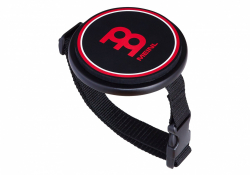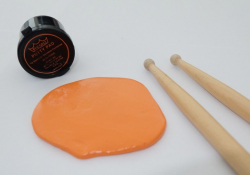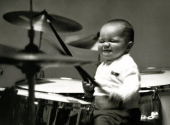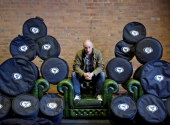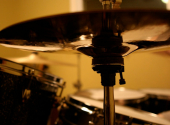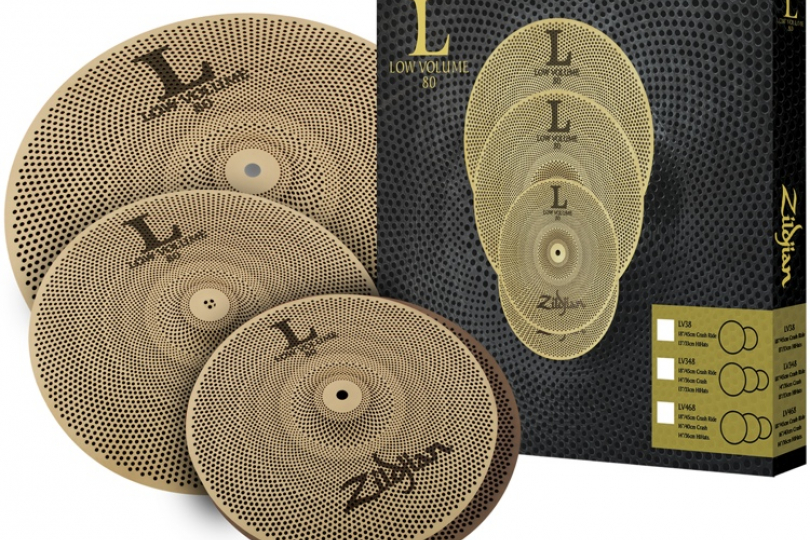
How To Practice Drums Anytime, Anywhere
The everlasting problem of drummers—how to practice their playing and technique at home without bothering their neighbors or family unnecessarily. I’m not going to recommend banging on pillows or mattresses. Fortunately, there are better options.
Most drummers will agree with me that although they spend a lot of time playing their instrument in rehearsals and concerts, they still need to practice outside of those times. If you have enough space at home, the situation is much easier. You can choose from a vast range of electronic drums that, in addition to some volume control, offer a superb option of playing on headphones. In this way, you get almost zero sound and the bounces of the drumsticks from the pads are only minimally audible. Apart from the aforementioned need for space, the problem may be, firstly, a high purchase price (increasing in proportion to the sound quality) and, secondly, a slightly different feeling from the play—and not only as for the bounce of the drumsticks.
There are also practice pads similar to the electronic ones, but without electronics, which can serve very well, for example, for training coordination but are not very suitable for general practice.
Another option is to move a real drum kit into your home and make it as soundproof as possible for practice. Stuffing the drums with foam, blankets, or throwing towels over the drum skin will certainly help a little, but there are much simpler, more elegant, and, above all, more effective solutions. The best way to “quieten” a kit is to use rubber drum mutes, sold either individually or in sets, which are simply placed over the drum skin (drumhead) and cymbals. While they will not completely muffle the sound, they will at least bring it down to an acceptable level.
Mesh heads that are stretched directly over the drums instead of the drumhead provide even more muffling. Their advantage over rubber drum mutes is also a more natural bounce of the drumsticks (depending on the quality of the mesh head, of course). It should be added, however, that even mesh heads do not make the kit completely “inaudible.” But on the other hand, there is at least some sound for you to get a real feel practice, and its volume is at a more than acceptable level. As far as cymbals are concerned, if you don’t want to use rubber drum mutes, you now have the opportunity to try a new product that Zildjian has recently come up with, the so-called Low Volume cymbals, designed specifically for quiet playing or practicing.
Another thing to keep in mind is that it’s not enough to just “mute” the sound of the drum kit, but you also need to get rid of the vibrations that necessarily accompany your playing. Big drum or floor tom legs, cymbal, and snare drum stands all transmit the vibrations “perfectly” to the floor, and your neighbors probably won't praise you for those either. Often a thick carpet or even a mattress will do, but the best solution is to use various anti-vibration pads that you can commonly get in hobby shops or building supply stores.
So much for practicing at home if we have the luxury of space and, therefore, the advantage of practicing on a classical or electronic drum set. If we don’t have that space or if we need to have some sort of a practice tool at hand almost all the time, there is a solution in the form of practice pads. They are space-saving, portable, and also almost noiseless. Moreover, these pads can be purchased in several sizes, some of them having a thread on the underside for attachment to a regular cymbal stand. And with some models, the pad stand is included right in the package. Although this tool does not allow, for example, coordination training, it is quite sufficient for hand technique practice. The pads are usually made of a durable material that also faithfully simulates the bounce of the drum skin.
And if you find even a training pad too big and unportable, you can certainly make do with a training mini pad, which can be easily attached to the leg with a strap—and you can practice on the go. An even smaller and more portable option would be a training mass similar to plasticine, which you simply tip out of the cup, shape into a flat thing on a solid surface, e.g. with a drumstick, and off you practice. The mass has bouncing properties similar to the drumhead, it leaves virtually no traces on the surface after removal and can, of course, be used repeatedly.
So, before you start pounding all sorts of cushions, pads, mattresses, or even your own thighs at home, take a look around at what the musical instrument market currently has to offer. I think the range is varied enough to satisfy almost any drummer eager to practice.
If you have found an error or typo in the article, please let us know by e-mail info@insounder.org.

